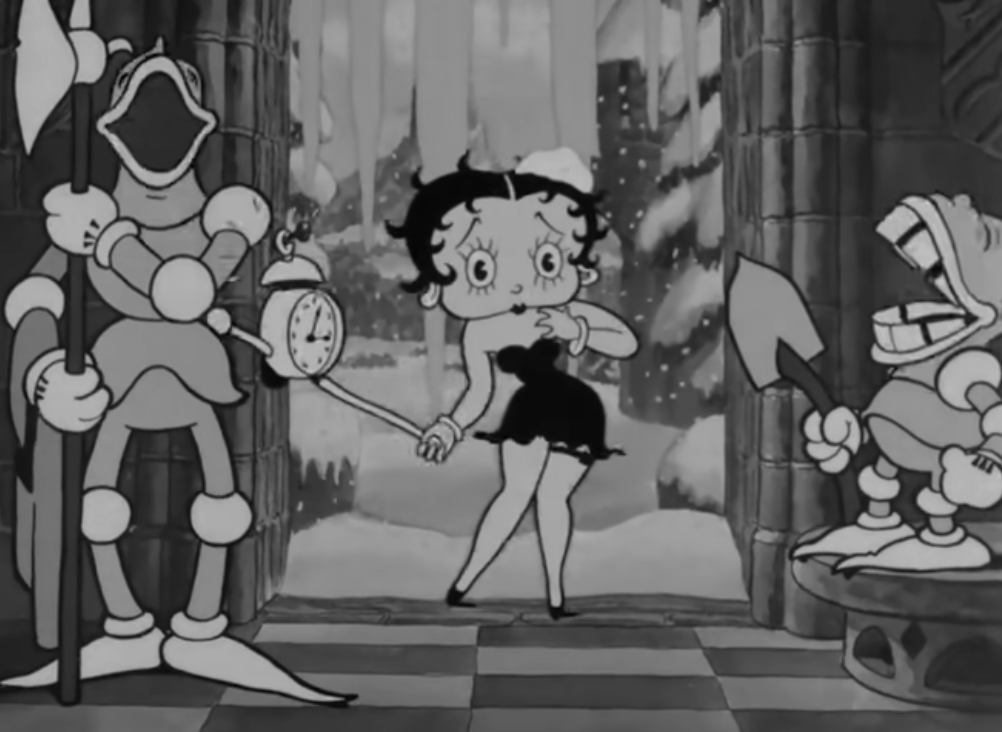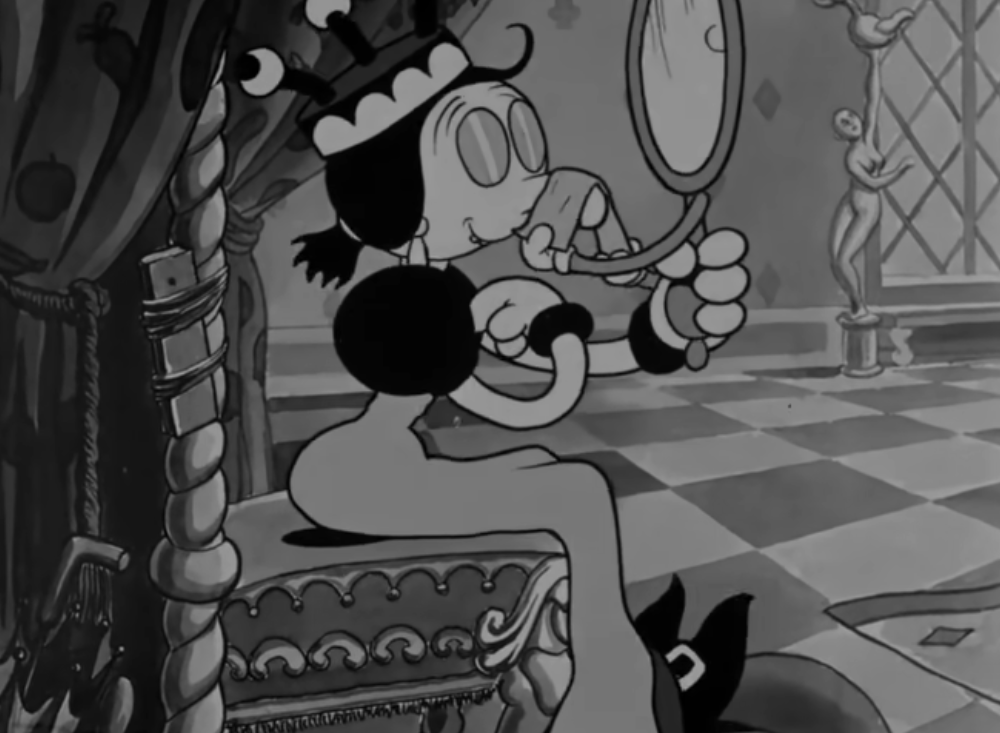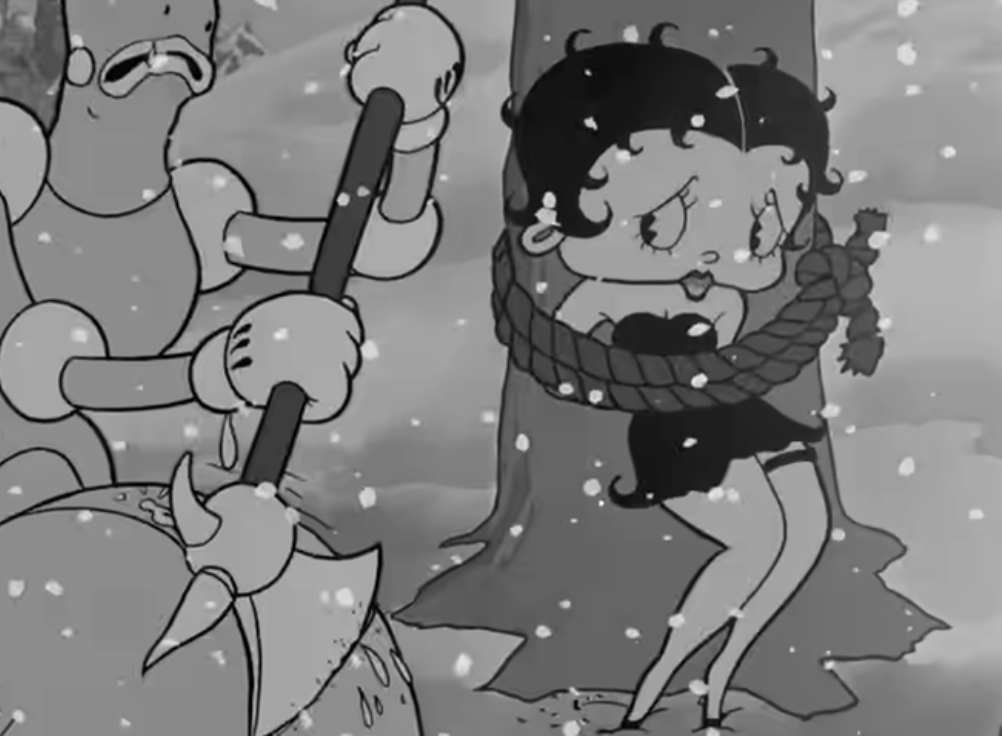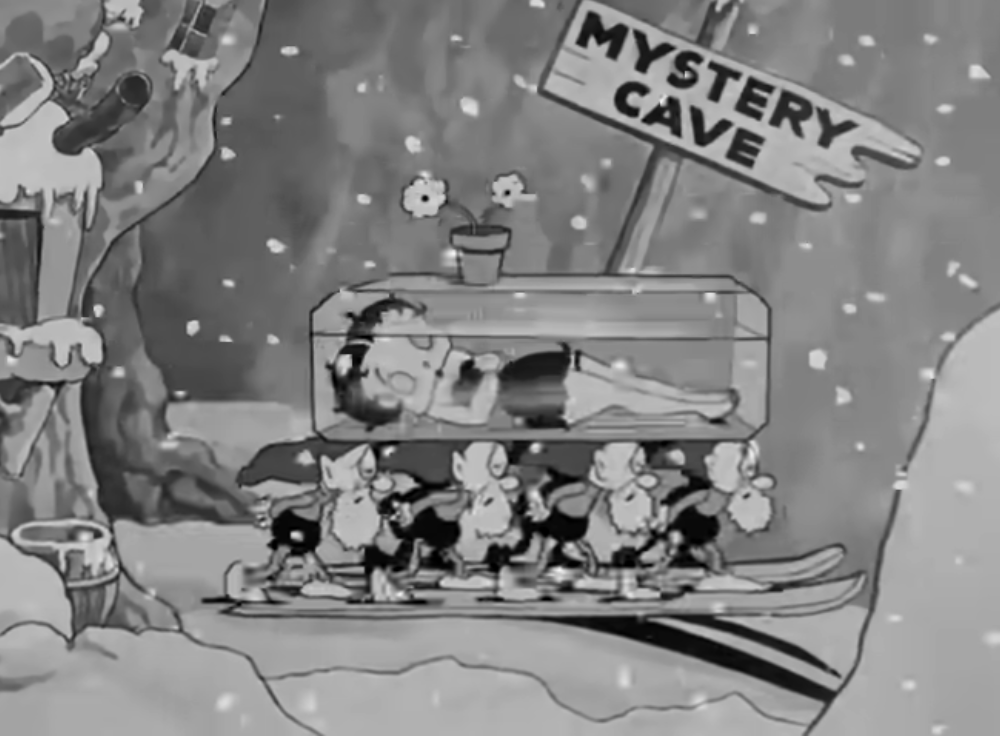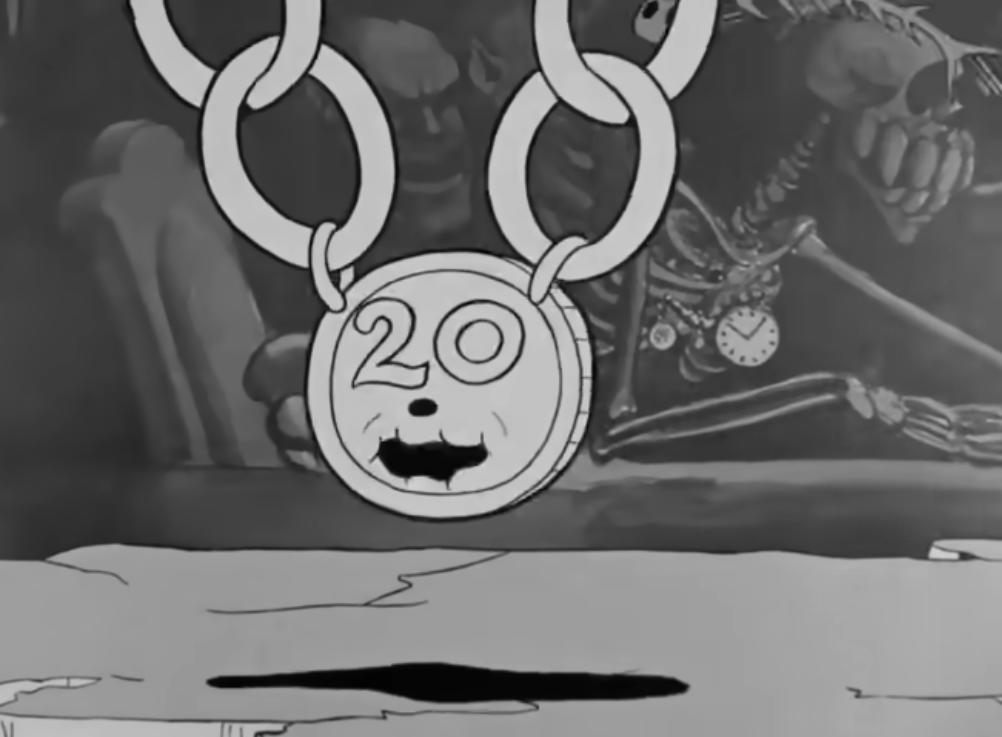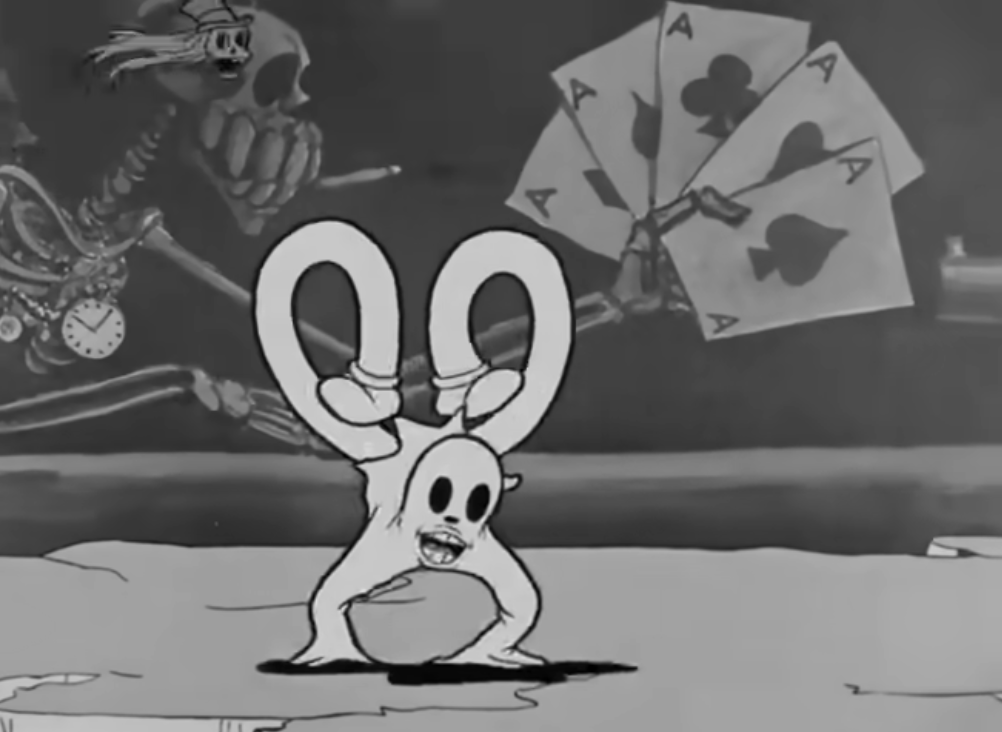As always, I recommend watching Snow-White before continuing on to the article:
While pre-code cartoons tended to be a wild bunch in general both due to the permissiveness of the era and the exhilaration that came with new sound technologies, few were stranger than what came out of Fleischer Studios. Disney’s biggest competitor at the time, the typical Fleischer Studios product tended to be more hard-edged, provocative, and unapologetically strange than anything from the House of Mouse. Case in point: their Betty Boop series.
Betty Boop is about as pure a pre-code creation as they come. She was a bonafide cartoon sex symbol, and her design’s juxtaposition of the cute and the alluring contributed to her popularity. The cartoons in which she appeared certainly catered more to the grown-ups than the kiddies. Snow-White is a great example, with its jazzy music, non-sequitur comedy, and macabre imagery.
As in the original fairy tale, Betty is the fairest in the land and therefore targeted for death by a jealous step-mother. Koko the Clown and Bimbo the Dog weep as they prepare to dispatch her, but they take pity instead and Betty manages to escape, only to fall into an icy river. She re-emerges in an ice block (a stand-in for the glass coffin), which is taken by seven dwarfs into a “Mystery Cave.” And that’s about all there is of the original story, unless I forgot about a random musical number or the queen transforming into a dragon.
Snow-White is less of a conventional story than it is a bizarre dream. Every frame boasts some kind of gag or surreal flourish as characters morph into new forms. The whimsically ghoulish backgrounds in the “Mystery Cave” alone are something to examine on repeat viewings, from skeletons playing poker to monsters grinning from framed photos on the wall.
The early Fleischer cartoons were notable for featuring some of the top jazz talent of the 1930s. Snow-White boasts the legendary Cab Calloway performing the “St. James Infirmary Blues” through Koko the Clown. Calloway not only provided Koko’s singing voice, but also his smooth dance moves via rotoscoping technology. The result is the highlight of the short, an eerie mini-music video in which Koko morphs into a crooning, moonwalking ghost as he tails Betty’s impromptu funeral procession.
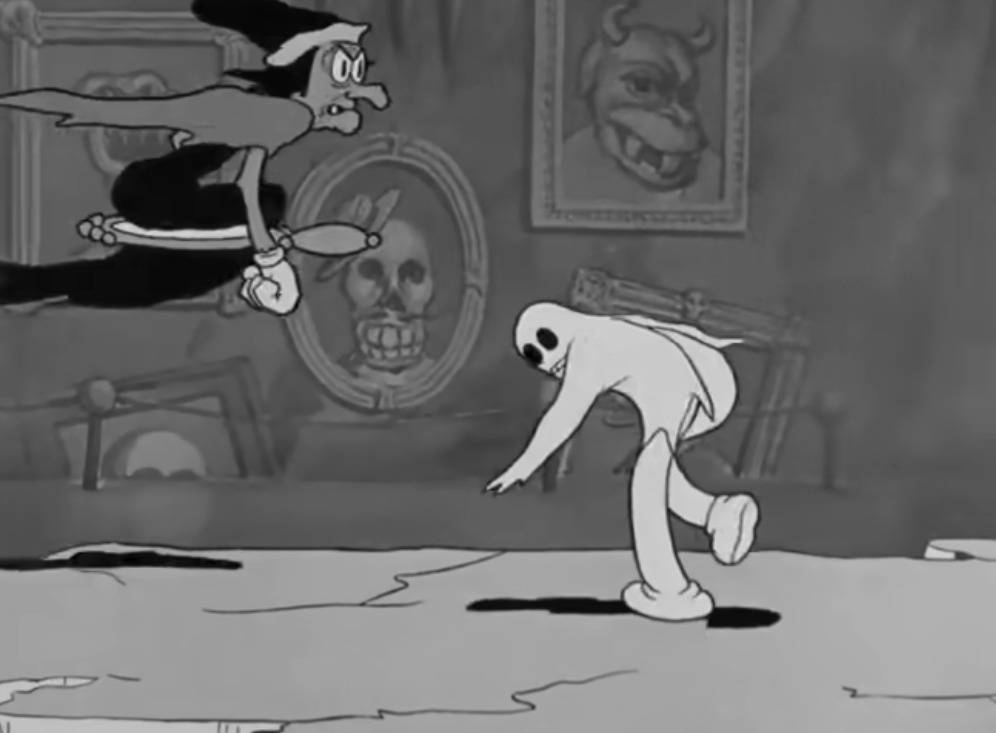
Intriguingly, the number is not a 100% non-sequitur when you consider the lyrics of “St. James Infirmary Blues.” Koko is following Betty in her frozen coffin, while “St. James Infirmary Blues” starts with the singer visiting the corpse of his lover in a hospital before musing on his own eventual death.
Somehow, this somber song suits this otherwise high-spirited short perfectly. Between the winter time setting, monochrome visuals, and the continued presence of death (threatened, assumed, or otherwise) throughout the seven-minute runtime, I even dare to say Snow-White is borderline cartoon noir, only it’s so playful that it keeps any true moodiness at bay. Even among the strange Fleischer canon, Snow-White stands out and deserves its place as a classic of animation.
Sources:
“Animation Anecdotes #150″ – Cartoon Research
BFI Film Classics: Snow White and the Seven Dwarfs by Eric Smoodin
